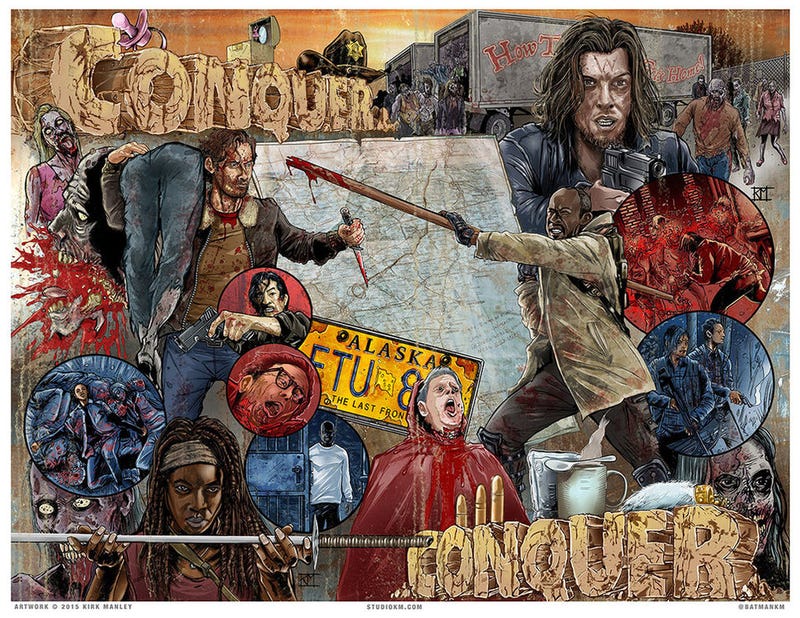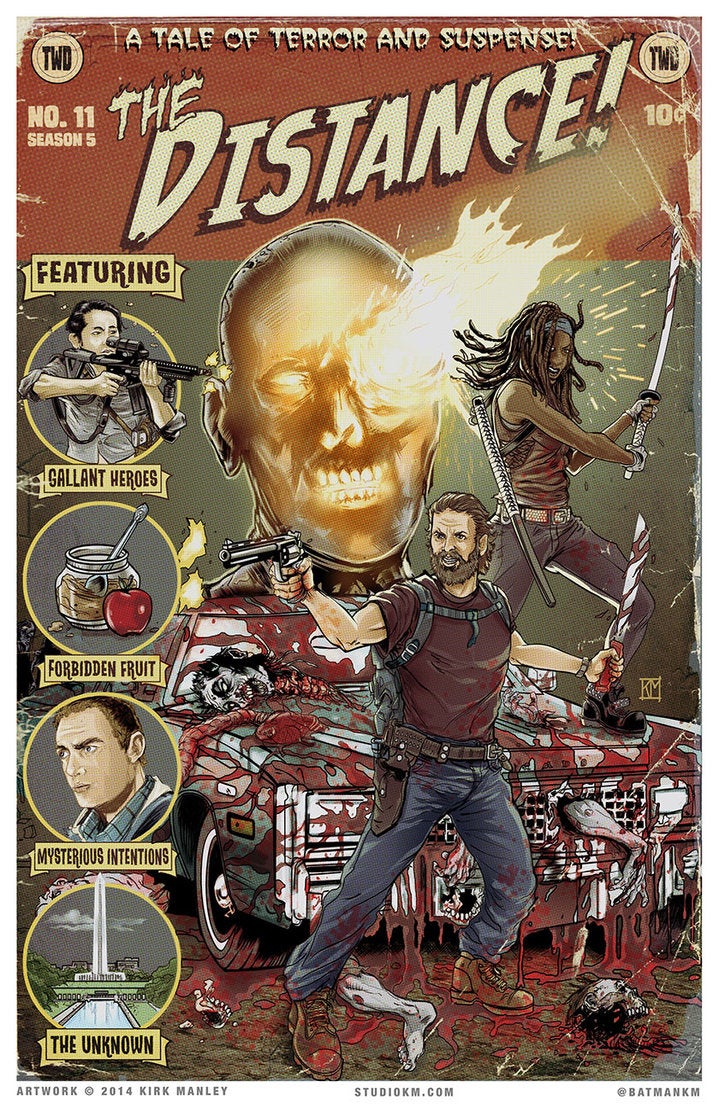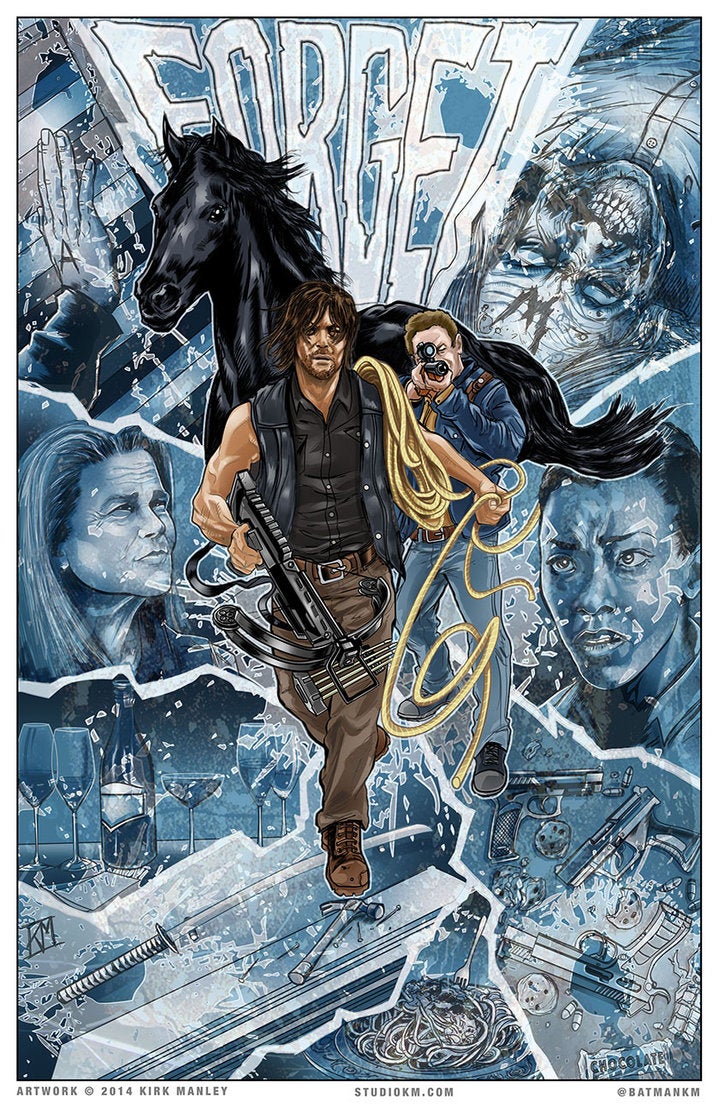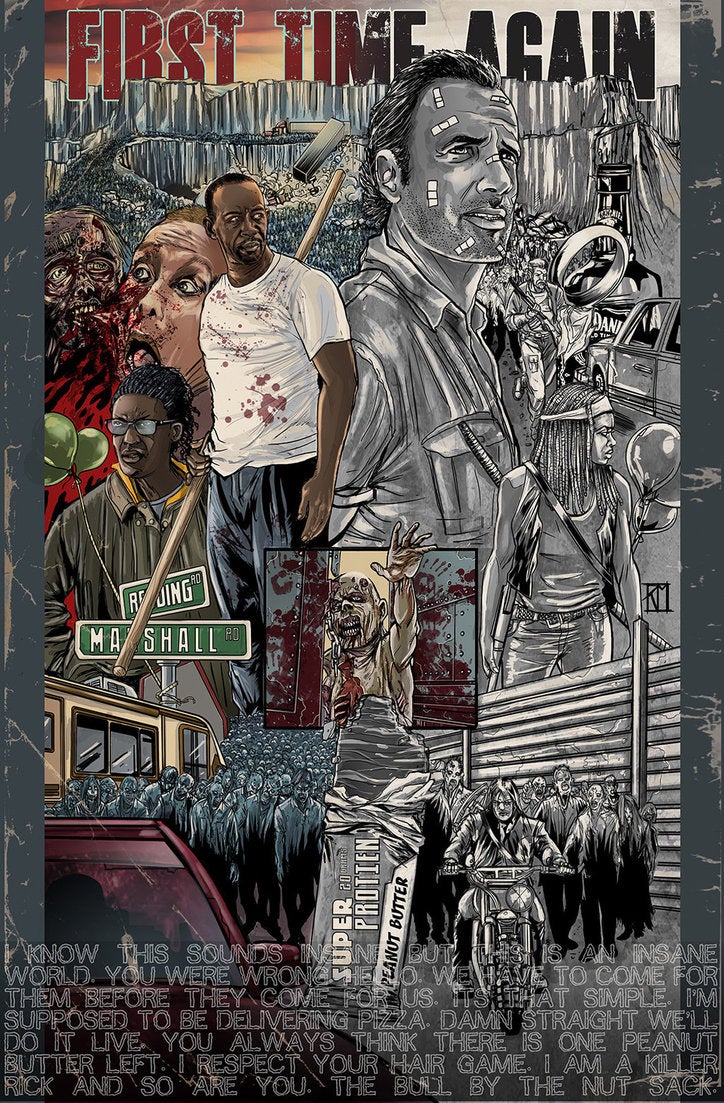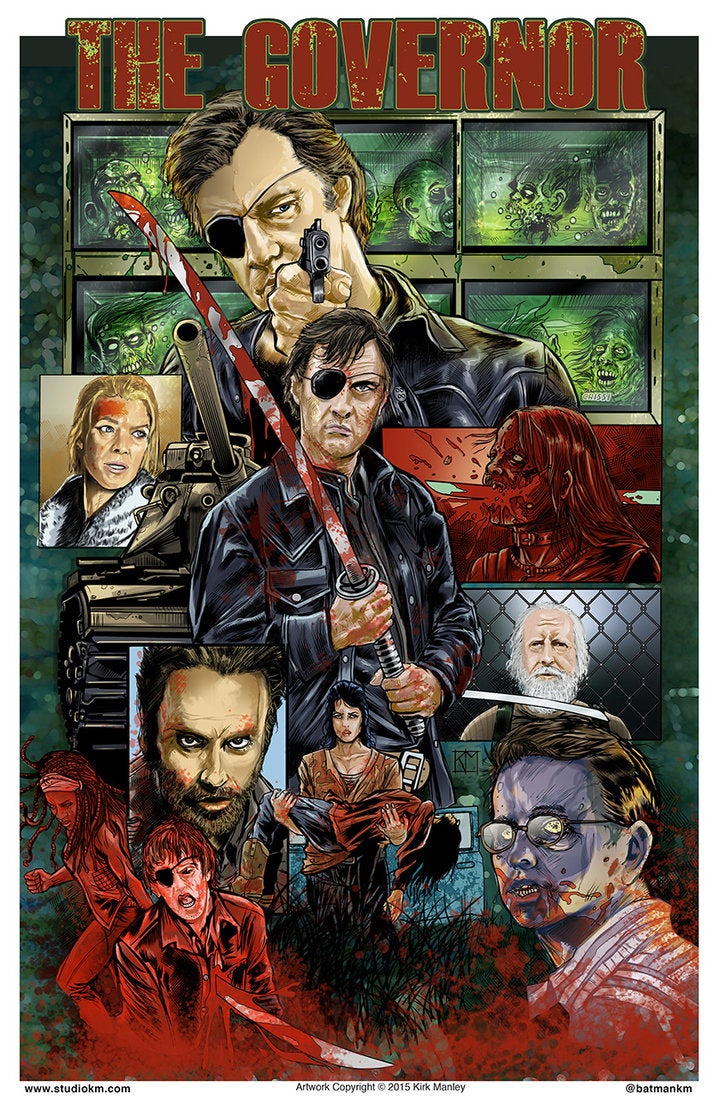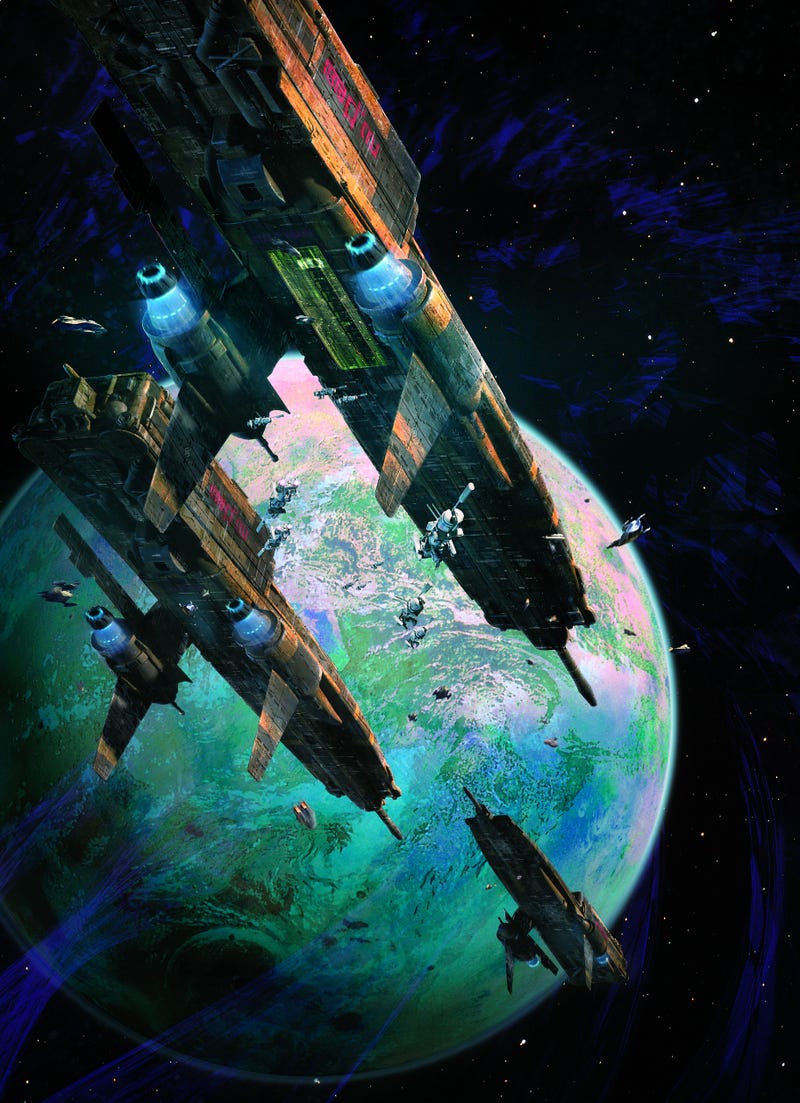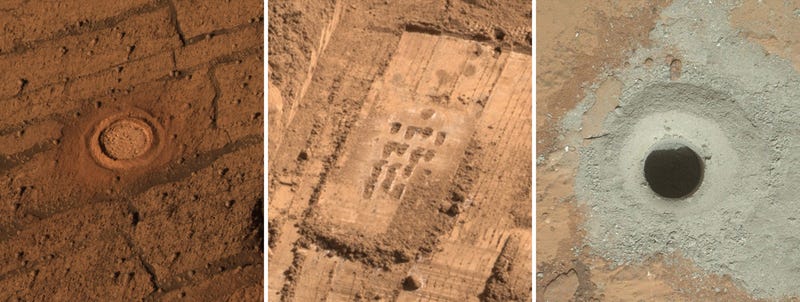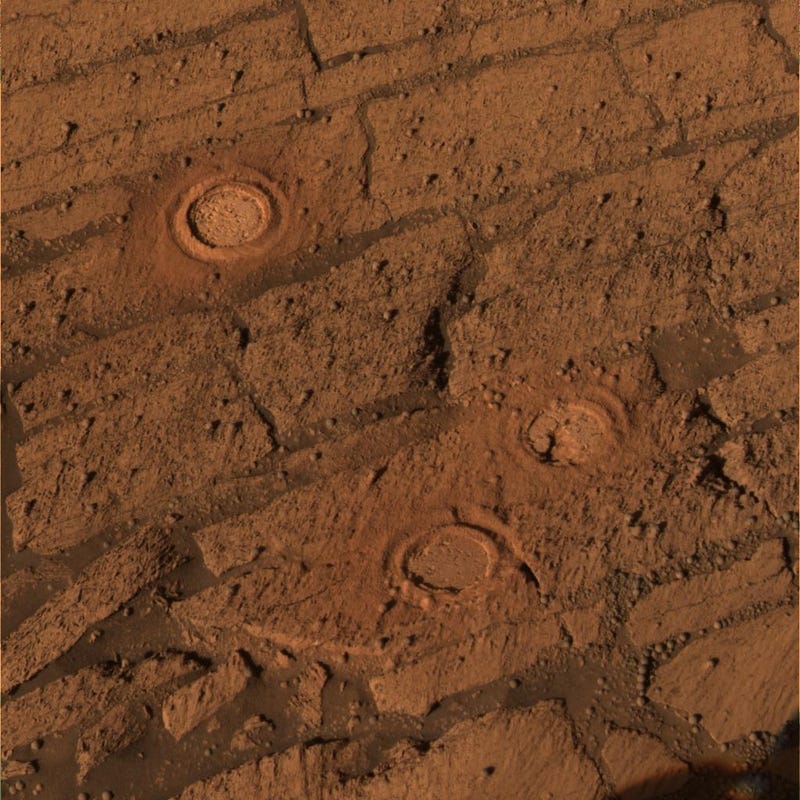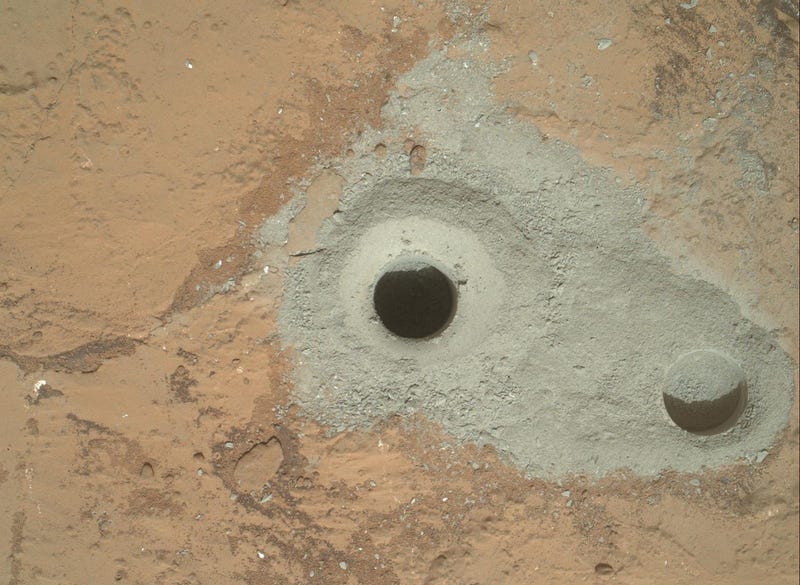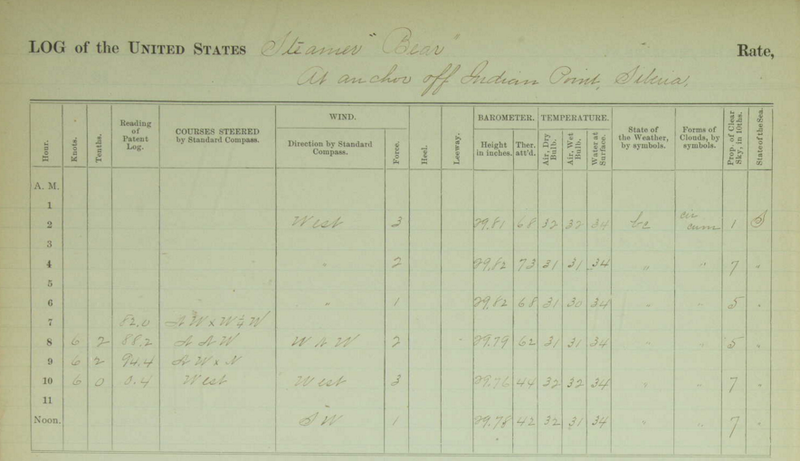
A decade ago, cutting-edge writers/publishers were crafting books that were physically works of art, in response to the rise of ebooks. Now, those same people are making apps. Miranda July, creator of the instant-messaging app Somebody, talks to Russell Quinn, co-creator (with Eli Horowitz) of The Pickle Index and The Silent History, about making apps that are deliberately difficult to use.
Miranda July, of course, is the author of The First Bad Man and the director of Me and You and Everyone We Know, and her app delivers your message not to your intended recipient, but to the subscriber standing closest to that person, who then delivers it verbally. The Silent History is an app that traces the stories of children who were raised without language, over four decades. The Pickle Index, which is a novel as well as an app, follows a dystopian government that requires its citizens to use a recipe-sharing app.
http://www.amazon.com/The-First-Bad-...
Miranda July: It’s a good thing we’re having this conversation, because you’re still a little mysterious to me, even though we’ve been working together for a year. Our friend-iversary is tomorrow, actually — we first met in person on Thanksgiving last year.
I’m going to start by saying what I tell people about you and you can tell me how incorrect that is. So, if I’m pitching you to somebody as a collaborator, I say: He’s from the UK and he started this successful technology company in London called Butter and he ended up finding that life to be exhausting, so he left it all and he moved to a redwood forest in California. He lives in a place called Cazadero and it’s a real thicket — he opens his front door and it bumps into a tree — and now he only works on the finest and most-groundbreaking digital projects and he does that because he’s just so talented. And the other person says “Great!”
So, did I get anything wrong?
Russell Quinn: I am British, that part is true. But, the company I started was actually in Copenhagen — I moved there to start it with a Danish friend — and the name of the company was Spoiled Milk.
Miranda: Oh! I’m realizing that “Butter” was actually the name of a band my husband was in.
Russell: Well, they’re both dairy products! But, right, I was in Copenhagen, which was actually my first attempt to find something more meaningful to me. Before that, in the early-to-mid two-thousands, I was working for Sony in Bristol, UK making the tools that games companies use to make games — optimizing compilers, making performance-tuning software. Low-level computer science things that people wouldn’t ever directly experience in their lives. But in my spare time, I was making stop-motion animations and helping out at a local art-book store where I discovered, among other things, McSweeney’s.
Miranda: Right, McSweeney’s! That’s a piece of the story I forgot.

Russell: It was at that bookstore where I met Casper Hübertz, a Dane who was studying graphic design in the UK for a year. When it was time for him to return home, we somehow decided to start a design company together. So I quit my job, moved to Denmark and for a year we avoided digital completely — we made record covers and music videos for bands, which felt good, but we weren’t making enough money to live in Copenhagen, so we started building websites and then things took off. I ended up moving to Switzerland to open a second office, and Spoiled Milk became a digital agency working for the Swiss Post Office and Danish political parties. Things were good, but had somehow skirted what I was originally looking for. Or maybe I just didn’t know what I was looking for. In 2009, I ended up burning out, leaving, and looking for new projects again. That was the year that the iPhone really started to take hold and I ended up contacting McSweeney’s to see if they wanted to collaborate on an app. Eli Horowitz, who was then publisher, replied and we got to work. Him in San Francisco, me in Zurich. I subsequently ended up moving to California and collaborating with Eli on these digital fiction oddities that we now make together.
Miranda: The two of you just happened to be interested in the same thing?
Russell: We both had similar frustrations, but from kind of opposite directions. Eli was feeling sad about how beautiful printed books were ending up as lackluster e-books and I was feeling sad about gimmicky, technology-driven storytelling experiments that had out-of-copyright classics shoehorned into them. We felt like there was some missing middle ground. We didn’t have answers, but we wanted to experiment. The first result of that was The Silent History, which came out in 2012.
http://www.amazon.com/The-Silent-His...
Miranda: Tell me about that again.

Russell: That was a story about a generation of children born without a sense of language—it followed them from birth over the next four decades. The text was serialized over six months via an app and also included site-specific Field Reports — immersive short stories built around the physical environment of the events described, like a walking tour blurring the real world and the fictional world.
Miranda: That aspect always reminded me of Janet Cardiff’s audio walks, where you put on headphones and you “turn ninety degrees this way” and” look forward and you’ll see a house on a hill.” That long predated the current technology, but it always seemed so amazing to me that you could use the real world more with technology — in that case, it was just a Walkman. As an author, I’m often approached to do uncomfortable-seeming hybrid projects and I always think “Well, if I’m going to do that, I just want to write a book.” The real enticement comes from getting something of real life that you can’t get from just writing a book — another dimension of reality.
Russell: You made your first app recently — Somebody, a really fun spin on a messaging service. What interests you about apps as an art form?

Miranda: I didn’t start out being specifically interested in apps, but somebody mentioned to me that they could make me an app for free and so that was enough to kick off me thinking “Well, what is an app?” Initially I wasn’t that focussed on it, but I am used to working in new mediums, or constantly switching between mediums, so the practice of thinking what can I do here that I can’t do anywhere else is very familiar.
And I love to meet people in their “homes,” to reach people with the devices they’re already using. Getting people to museums or a performance can be a really special encounter, but I also like the mundaneness of an exquisite experience that comes via something that is otherwise kind of deadening. The fine line of that is so interesting to me. Especially right at this moment in the development of technology — there’s so much stuff you don’t want or need, but there’s the occasional thing that’s, like, maybe there’s hope for all of us!
Russell: Yeah. We’ve been trained to expect apps — unless they’re obviously a game, which brings with it another bunch of preconceptions — to be immediately understandable, to have perfect usability, to be something that works for us. But that’s not normally true of storytelling. You start reading a novel or watching a movie and you have no idea what’s going on, but you trust the storyteller that these things will be revealed and you work to meet them halfway. That’s most of the fun!

Miranda: That’s what made The Pickle Index, your new project, give me such a weird sensation. I could feel palpably that everything was intentional and working perfectly, but it wasn’t yet understandable. So my brain had to respond to it as I would with storytelling.
I’m always reminding myself that filmmaking is the art of omission — that’s what creates story and suspense. And this is the same thing, but with an app. Getting to feel your needs for a moment is more interesting than having every need catered for, to feel a little lost or thrown or confused. That’s what makes some people — including me — uneasy about technology. Is it taking away our ability to sit with discomfort or not knowing? So I like that you consciously built that into this.

Russell: We were trying to explore that both in the app’s functionality and in the story itself. The book is about a goofy prison break in a faraway land where a semi-oppressive government tries to raise morale among its citizens by creating a mandatory recipe-sharing network to promote the nation’s traditional cuisine — fermented vegetables, elderly dairy, and oddly colored meats.
The hardcover version is two books in a slipcase, which plays with the physical format in fun, tactile ways. It’s a new kind of reading experience, but you’re still a human in the real world reading a storybook — the way we’re all used to reading a novel, outside-in.
The app, however, is the mandatory recipe-sharing network itself — the inside-out version. You launch the app and you’re suddenly within the story, using the Index alongside other citizens. The adventure takes place over ten days and in the app you experience this over ten days in real time. The more you explore and poke around, the more you learn about what it is you’re using. Along the way, there are mini-games, dynamic maps, network overloads.
http://www.amazon.com/The-Pickle-Ind...

So, on day one, you open the app and you might feel confused. But this is a propaganda device designed by a loopy government to promote the consumption of fermented foodstuffs — it is weird. The overall result is hopefully an immersive, exploratory experience.
Miranda: I was exploring similar questions in Somebody, which was purposefully inefficient — one person personally delivered a message on behalf of a separate person. You had to do all this extra work. It’s much easier to just text a message. I don’t think it’s just a conceit, but if it is then all of the history of literature and film and dance and music is a conceit. If it feels different, it’s because we watched this technology being invented and we feel like we should be behind the curtain and there should be no mystery.

Russell: Yeah, I see the similarities between the projects. With Somebody, the snap reaction is: why would I go through this process of delivering a message via a real person when I could just send an email? With Pickle, it’s why would I want to poke around in a recipe-sharing app, when I could just read the text? But, hopefully, once you dig deeper, you find that both projects are offering unique encounters with experiences that you think you know how they should work.
Miranda: Are there a lot of people like you? Do you have a sense of peers? I don’t know the landscape of this world.
Russell: There are definitely some other people working on experimental projects like this. But, I do think there’s probably a lack of qualified developers and designers willing to experiment to this degree. A result of the current Silicon Valley tech boom is that there are many great developers but they’ve all been sucked up by venture-backed start-ups or Facebook. They’re working on projects with very different aims — products and systems that strive to problem-solve and disrupt and scale to millions or billions or users. There’s so much about that world which does not allow for a freer expression of ideas. Ideas that can exist without a super-rational reason. I think some people — including myself at various stages — are confused why we spent three years creating Pickle, when we could have created a usable recipe-sharing network that we then sold to Uber. Instead Eli and I spent the time sculpting a weird, fictional, storytelling experience, mainly because it was enjoyable to create something together. That feels instinctively odd to people when viewed against the current gold-rush backdrop of the app scene, but is something that happens in other mediums all the time.
I think the Valley’s current lack of availability for experimentation also makes it hard for authors, filmmakers, comedians, whoever — who maybe want to dip their toe into bespoke technology experiences — to find capable collaborators.
Miranda: I appreciate that you sort of… well, I remember a meeting we were once both in with an investor guy and he knew I was an artist and was kind of talking to both of us like we didn’t know anything about tech and was sort of talking down to me, which was maybe appropriate because I didn’t know anything, but I found myself compelled to blurt out “Russell knows!” And you said, very gently, “Yeah, I know what [whatever the word was] is.” I appreciate that you don’t perpetuate the masculinity of the industry — it’s a very sexist industry — and you don’t use your knowledge in that hyper-masculine way. It’s a subtle thing, I think it must come from a pretty deep place that’s just you, because a lot of people would not choose to be like that. It’s really hard to come up with another way to be within that culture.

Russell: That macho mindset you’re getting at is definitely something that turns me off about the Valley right now. But it also seems hard for individuals to break out of it. Tech is the boom industry of the decade. Although this is changing, it’s historically populated by nerdy boys who grew up alone-ish with computers, and now their hobby has become this big industry and people are treating them like superstars, throwing money at them to work on tough problems that can affect millions of people around the world. It seems hard to not get an ego and feel like it’s deserved and to comprehend relative privilege over but I felt isolated growing up. I’m not saying the industry shouldn’t be evaluating its culture — it definitely should — but just that I can step back and sorta see how it got this way. There’s so much backlash right now, but I think trying to understand things it is the first part of correcting them.
I’ve often seen people join companies and quickly get caught up in the groupspeak and superiority complexes and belief that the only thing worth doing is erasing every inefficiency in daily life because everything should be as optimized as possible. Why the hell should I get a stranger to go and deliver a message to a friend when I can just send a text message to anyone in the world in a second? But there’s clearly room for both. It’s obviously amazing that we can send messages anywhere on the globe in an instant, but there are also ways that technology could make life more fun or fulfilling, not just more streamlined and efficient. Sadly, I think there’s not much room for that kind of stuff right now, because investment-led technology is using up all the resources and organizing people into gender-segregated funnels of agreement before they realize there even are alternatives. No individual is to blame here, but if it was easier for people to step out of that world, I think more people would want to. But a gold rush is not a good climate for that.
Miranda: For me there was a very steep learning curve while building Somebody and then rebuilding Somebody and that’s when I first reached out to you. Actually, I was pretty much on the floor crying from the learning curve. And that’s when things were going relatively well! Part of the problem was not understanding that this was a medium that never ended, where you didn’t ever finish work. I had approached it as if it would be done on the day I launched it, so I had to learn all these new ways of thinking, this new iterative process.

While I was working on Somebody, I also had to get a show ready, a performance. But I decided that instead of working really, really hard on it alone and then having a dress rehearsal near the end, I would start getting feedback from the beginning. So just as I was doing weekly sprints making the app, I did that with the performance. So, week one, I didn’t have it memorized, I was just holding my script, and I had an audience of fourteen people in my studio who had never seen it before. That forced me to learn quickly and work toward the next week. It’s useful to me, for all of my work, to learn a new process of creation.
Russell: I’ve always enjoyed working in technology but placing myself in different industries — working with writers, illustrators, people in TV, and so forth. It feels so much less isolating than working in a tech company making the things tech companies usually make. I need that connection to people who make things in completely different ways.
Miranda: Is that why you like to live in the woods? I’m remembering that in the thick of my hell with Somebody, you were just starting to help me and were also working really long hours on other projects, and you’d be taking a walk and text me a photo of, like, a beautiful sunrise. And I’d think What? I didn’t know we were allowed to take walks and see beautiful sunrises. It made me think that you’d been through this crunch again and again and you must have learned what you need to be ok, to just be a person.
Russell: I guess, but I’m sure that’s the same as any industry: you go through enough projects and you figure out which problems are real and which are transitory. That was your first big tech project, so you were feeling every bump. But if things were switched and we’d been making a movie — I have never made a movie — it would have been me freaking out and you texting me sunrises.
Miranda: I would never text sunrises while making a movie.


















![Watch NASA's Cygnus Spacecraft Launch to the Space Station Live Right Here [UPDATED]](http://i.kinja-img.com/gawker-media/image/upload/s--jrC66H39--/c_scale,fl_progressive,q_80,w_800/l027lrypopmiw6lvb5uf.png)
![Watch NASA's Cygnus Spacecraft Launch to the Space Station Live Right Here [UPDATED]](http://i.kinja-img.com/gawker-media/image/upload/s--ZeyMesDK--/c_scale,fl_progressive,q_80,w_800/phmkaqfrkztdxlz9bhoy.jpg)





